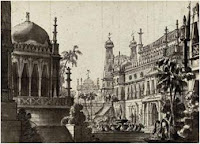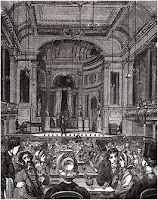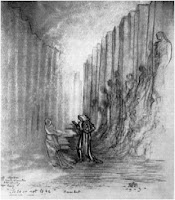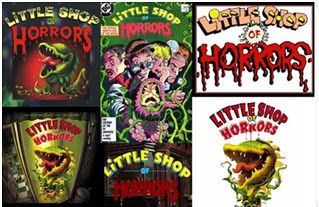Shakespearian theatre
This is the Shakespearian theatre which was originally called the globe theatre. It was built in 1599 and was the typical public theatre. Then the Globe Theatre was built on the same site again by June 1614 and closed in 1642. The it opened again in 1997.
When the audience came to watch the show they had to stand up. The ceiling was open so even if it would rain everyone would et wet. It was also overcrowded.
The English Renaissance
 The English Renaissance was a cultural and artistic movement in England dating from the early 16th century to the early 17th century.
The English Renaissance was a cultural and artistic movement in England dating from the early 16th century to the early 17th century.Inigo Jones was born in July 15, 1573 and sadly died in June 21, 1652. He was the first significant British architect of the modern period.
Jones' best known buildings are the Queen's House at Greenwich, London. He started working on it in 1616. You can see the image down below.
This image below is a masque Costume for a Knight, designed by Inigo Jones.
Early stage sets of the
16th & 17th century:
16th & 17th century:
•If there was any performances in Europe it would mostly be to amuse and entertain the Kings, Queens and Courtiers.
•At the time of making of the sets the best artists and architects were asked to design the sets.
19th Century
•In 19th-century Britain the audiences shaped both the theatres and the dramas played within them. The upper class favoured opera, while the working class, whose population in London alone tripled between 1810 and 1850, wanted broadly acted theatre with scenic wonders and machinery.
Scenery still looked very architectural and practical. The three major scenic trends during the 19th century, especially in Europe, were:
•Historically accurate scenery
•The development of the realistic box set
•A revolt against the two dimensional world of painted canvas.
Edward Gordon Craig
Edward Gordon Craig was an English modernist theatre practitioner; he worked as an actor, director and scenic designers as well as developing an influential body of theoretical writings. He broke away from traditional realistic set design.
Set design was very diverse during the 20th century. There was a lot of different theatrical movement going on in terms of playwriting and theatre philosophy which directly influences stagecraft. In 1920 a german theatre director helped designers to develop new ideas when Bertolt Brecht believed in a very bare stage so that the ‘truth’ of the acting was clear and not cluttered by elaborate scenery.
Artists and Designers like David Hockney and Pablo Picasso have developed theatre set design even further, creating exciting and innovative designs. Some of the big budget productions of contemporary mainstream theatre are very technically complex and elaborate. At the turn of the 20th century several strands of new drama were developing in the UK.





























